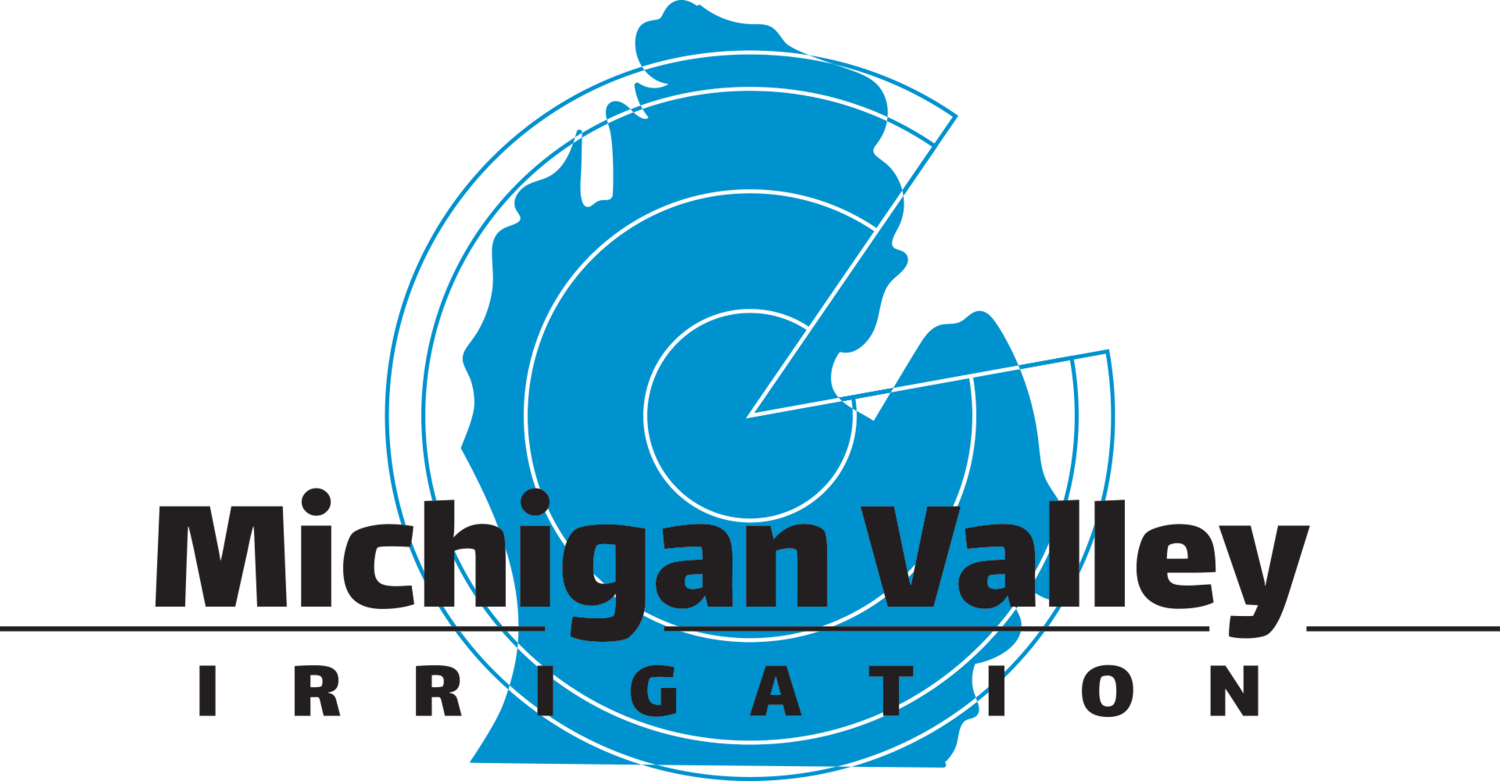Top 4 Reasons to Update My Center Pivot Sprinkler Package
“The sprinkler package on your center pivot is the most important component of the system,” says Josh Wolter, CID (Certified Irrigation Designer) at Michigan Valley Irrigation. It determines the efficiency and gallons per minute per acre applied to the field. It also determines droplet size and pattern that can be key to uniformity, wind drift and soil compaction. Because of its location at the end of the system, acting as the emitter, the tips are subject to wear, even though they may appear to be functioning properly. There are many reasons to pay attention to this critical component, and the cost is very minor compared to the rest of your system.
Tip & Sprinkler Wear
Used vs new sprinkler tip, same size.
The sprinkler tip orifice size determines the flow rate emitted at each port. Over time these openings get larger with wear, allowing more volume, which changes the uniformity and rate of application. To the naked eye, as your pivot travels around the field, it is nearly impossible to detect wear, but it is real and changes all the calculations made when the sprinkler package was installed. Water quality and sediment can have a measurable effect on wear. We recommend you inspect them every couple years and plan to replace the tips every five years or so.
Many sprinklers have other moving parts that wear. Just by their names, rotators, spinners, wobblers it would make sense that wear points exist. Again, water quality is a factor and should be considered for replacing within a seven-to-ten-year timetable.
Loss of Uniformity
Precise calculations are made to consider flow rates, pressure, port spacing, emitter coverage area, rate of machine travel and droplet size. Weather conditions will also have some impact including temperature, evaporation rates and wind speed and direction. A nice uniform pattern with an even application rate can deliver specific amounts of water to the soil for crop availability. When the sprinkler is not operating properly, uniformity will be lost, and crop water availability can vary dramatically. This can lead to drought stress or runoff, erosion and nutrient leaching. With good uniformity and precise application rates, modern sprinklers can be utilized in variable rate irrigation schedules by changing machine speeds. In fields with multiple soil types and moisture absorption rates, optimizing water application can be taken to new levels.
Sprinkler Location to Crop Canopy
Early pivots all had the sprinklers mounted on top of the pipeline. Arid areas became concerned with evaporation and wind drift with the emitter being several feet above the crop canopy. Drop hoses were developed to get the emitter closer to the ground to reduce both evaporation and wind drift. With Michigan having a generally plentiful water supply and significant humidity, evaporation is much less significant than in dryer climates. We also have an abundance of trees surrounding our fields, reducing wind drift. There are certainly low growing crops that can benefit from moving the sprinkler closer to the plant, but we have learned that streaking can occur and create poor uniformity if the sprinklers mounted on drop hoses are dragging through the crop canopy. It is important to consider all of the crops you will be irrigating with your center pivot. Valley makes a sprinkler mounting system called AquaDock to change the height of your sprinklers hanging from drop hoses when you are using a pivot to water in varying crop canopies. Over time your crop rotations may have also changed which could impact the best sprinkler package for your pivots.
Becoming Obsolete
The useful life of center pivots in a supplemental irrigation state like Michigan is often more than 40 years. While there have been many improvements and upgrades, the structure and drive train may still provide a solid, satisfactory piece of equipment to get water from a source to our fields. Great strides have come in stopping, starting, and controlling these structures along with the sprinklers. As recent as the 1990’s most sprinkler packages were only 60% to 70% efficient, meaning the ratio of the water reaching the crop compared to the water supplied by the irrigation system. Today many of the new generation of sprinklers are near 95% efficient. How much are you spending to pump and deliver another 30% or more water than you are getting to the crop? Would you continue to use a planter that only gives you 70% emergence? If you have any sprinkler packages that are more than 10 years old, it’s worth considering an upgrade. If it’s more than 20 years old replacement parts may be more difficult to obtain.
Sprinkler manufacturers are now putting some focus on low kinetic energy options with larger drops moving slowly to reduce energy consumption. Computers can run optimized models which may decrease the time it takes new models to get to market. Who said sprinklers were not an exciting topic!
For information on updating your sprinkler package call MVI at 989-762-5028
About the Author
Pete is the marketing manager for Michigan Valley Irrigation, having joined the company in 2016. He was raised on a dairy farm in western New York and graduated from Cornell University with a B.S. in agricultural economics. His entire working career of over 37 years has been involved in agriculture. A farmer helping farmers. When away from Michigan Valley he operates, Joyful Noise Farm, a small livestock and produce farm and spends time with his family.







